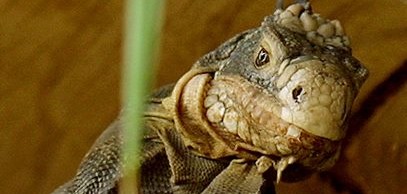
Since 10 October 2010, the three Caribbean islands of Bonaire, Saba and St. Eustatius officially joined the Kingdom of the Netherlands. With this expansion the Netherlands nowadays not only include real mountains such as Mount Scenery on Saba isle and the Quill on St. Eustatius but also very unique flora and fauna. One of its most eye-catching and iconic creatures is the Lesser Antillean Iguana (Iguana delicatissima).
Unfortunately this particular species of iguana can be counted among one of the most endangered iguanas in the world. The Lesser Antillean Iguana is quickly and quietly disappearing from the Caribbean Lesser Antilles. Most likely there are only a few islands left that are home to a small genetically pure population. This includes the island of St. Eustatius, however, also this island is on the verge of becoming yet another one to lose this magnificent, ecological vital and ancient species.
Various population estimates have been done on St. Eustatius that includes its last one in 2012 conducted by the Wageningen University, LVV and STENAPA. This assessment showed that the population of the I. delicatissima on St. Eustatius has reduced to nearly 75% compared to the 2004 estimation. Loss of habitat and predation by invasive animals are severe threats to survival. Especially freeroaming cattle, mainly goats, and humans are responsible for the destruction of habitat, while (pet) dogs and cats create an unsafe environment.
It’s important the Lesser Antillean Iguana remains on St. Eustatius however without the right tools and resources it will be a difficult task. Various international organizations are commited to helping local groups in their conservation measures. Amongst many this includes conducting a baseline population sensus to provide us with the exact number of iguanas present on the island.
There are various well proven methods available making it possible identifying iguanas individually but for the longterm trend watching in which citizens and tourists are involved the ideal method would be so called ‘bead tagging’. Such a research method entails equipping adult iguanas by means of different colored beads in the crest. The advantage is that iguanas bear a clearly recognizable colored pattern allowing people, researchers and the general public, to join the participatory action research or citizen science monitoring without disturbing or handling them. This is a very effective and non-labor intensive but most of all fun research tool.
At the end we clearly get a better overview of the Lesser Antillean Iguana population on St. Eustatius and are able to understand the iguana’s way of life and island use as we yet know far to little. Gaining species knowledge allows local groups to take the correct conservation measures protecting the iguana and its habitat.
It might be clear this particular bead tagging project costs money and although the various organizations are very supportive in their own manner funding is needed. Therefore we like to appeal to everyone who want to support the survival of this exeptionally beautiful iguana species for future generations to come.
Bart Kluskens
Coördinator Dutch Caribbean Program, RAVON
Stichting Reptielen Amfibieën Vissen Onderzoek Nederland

 Member: IUCN, Species Survival Commission, Iguana Specialist Group
Member: IUCN, Species Survival Commission, Iguana Specialist Group